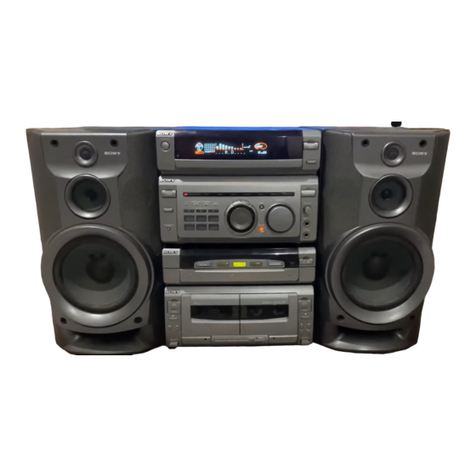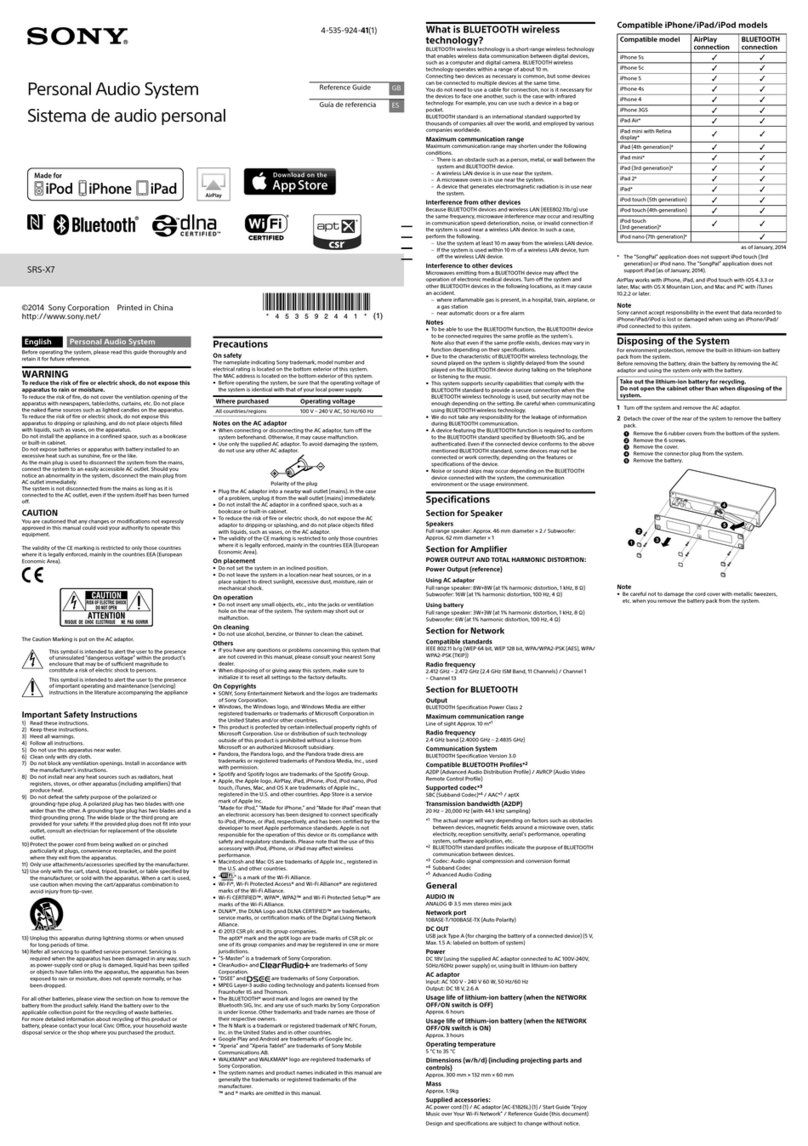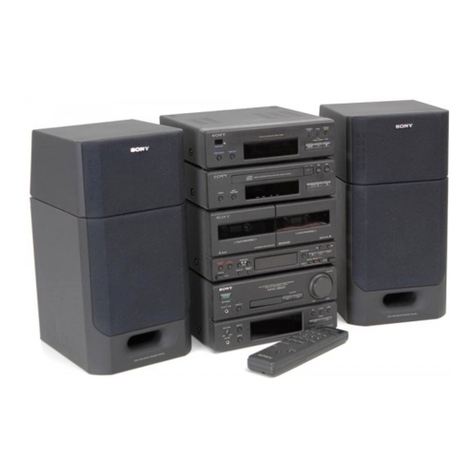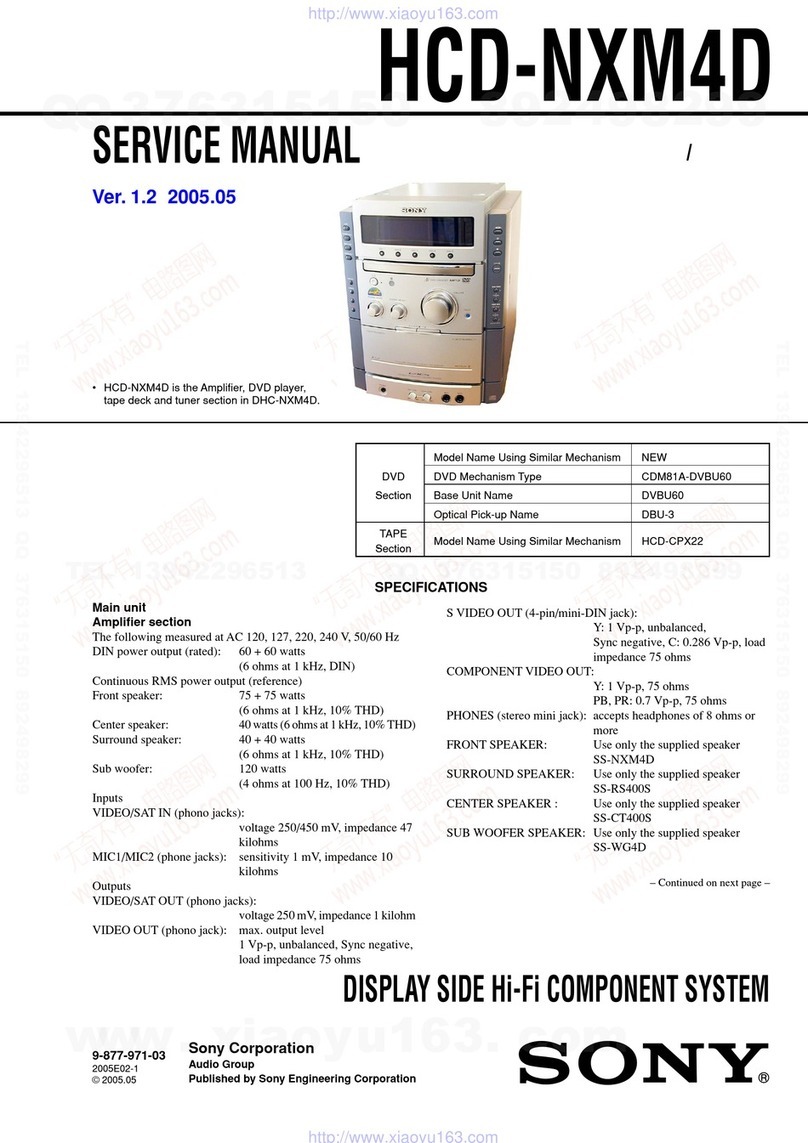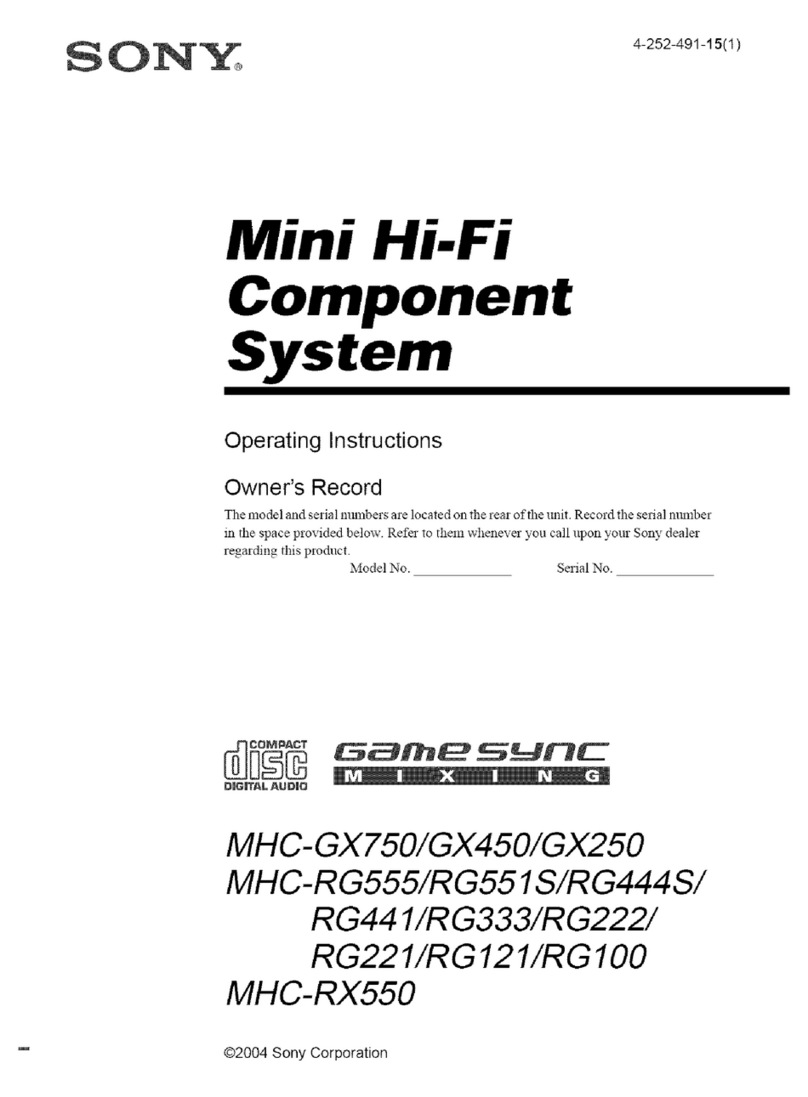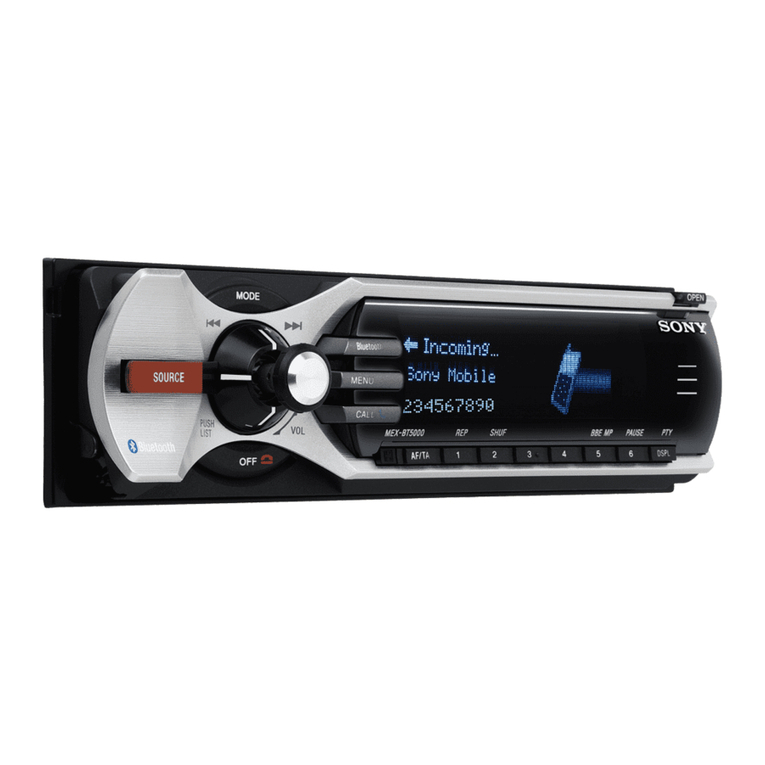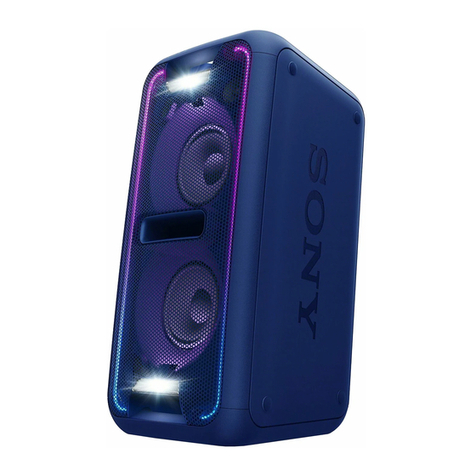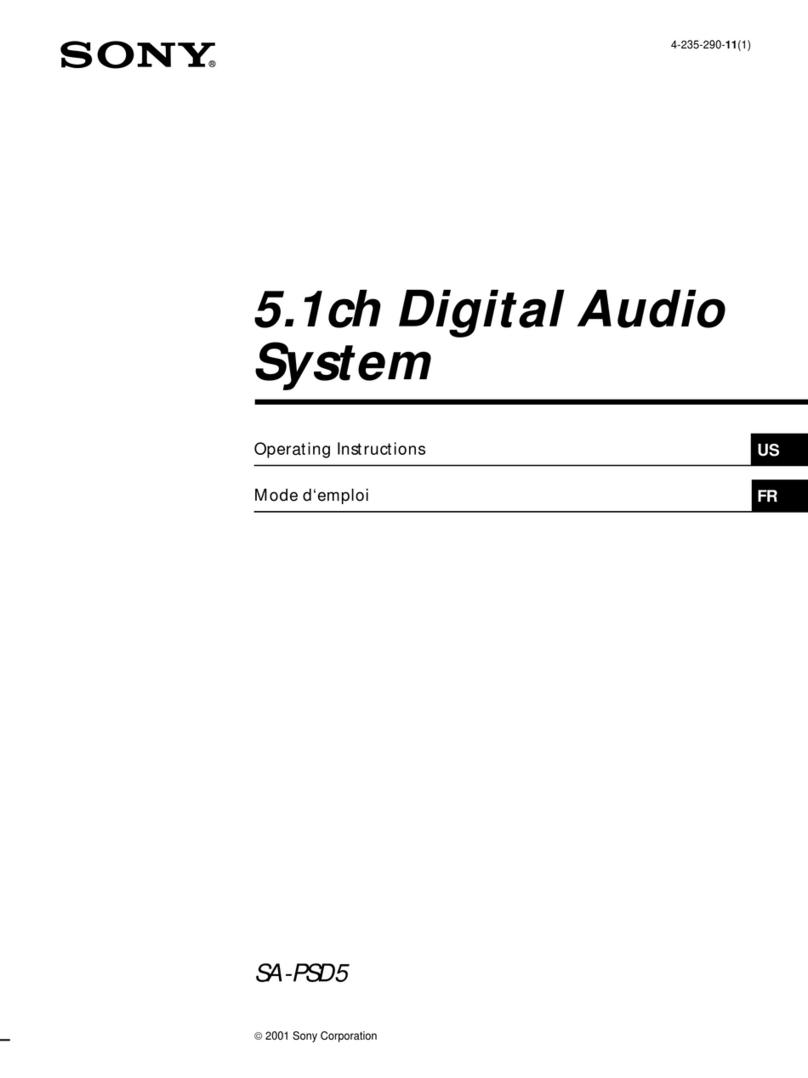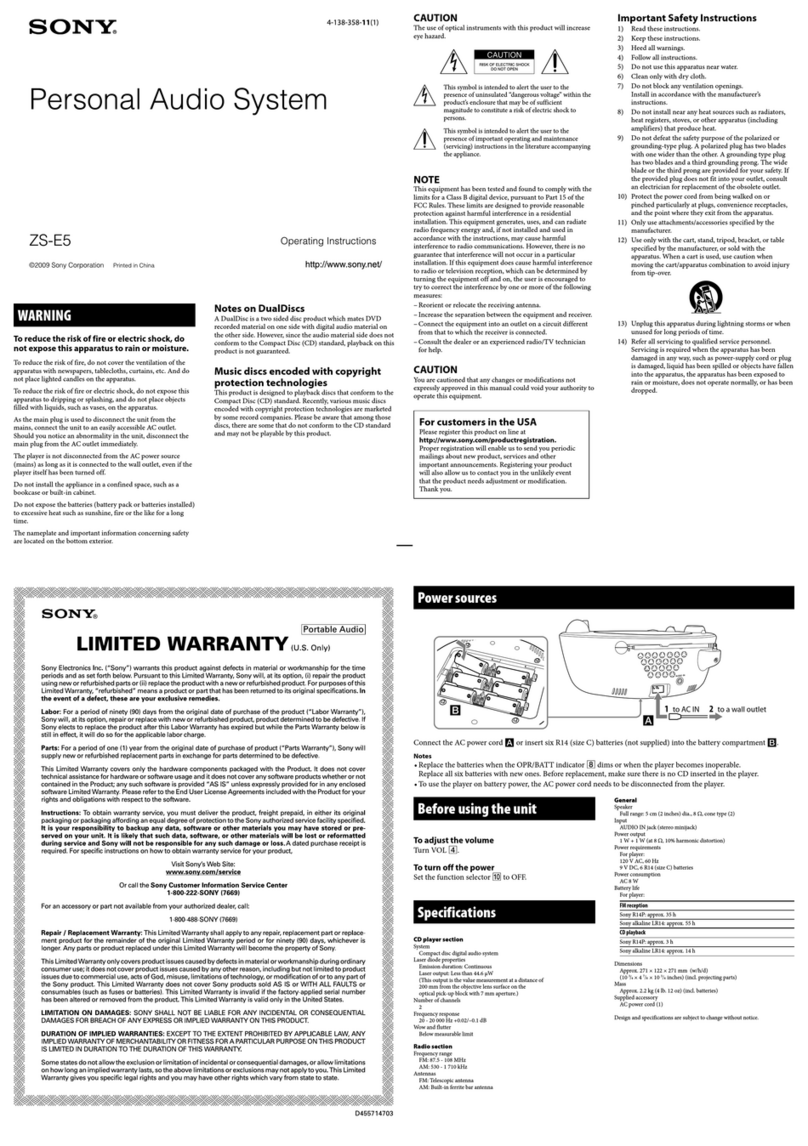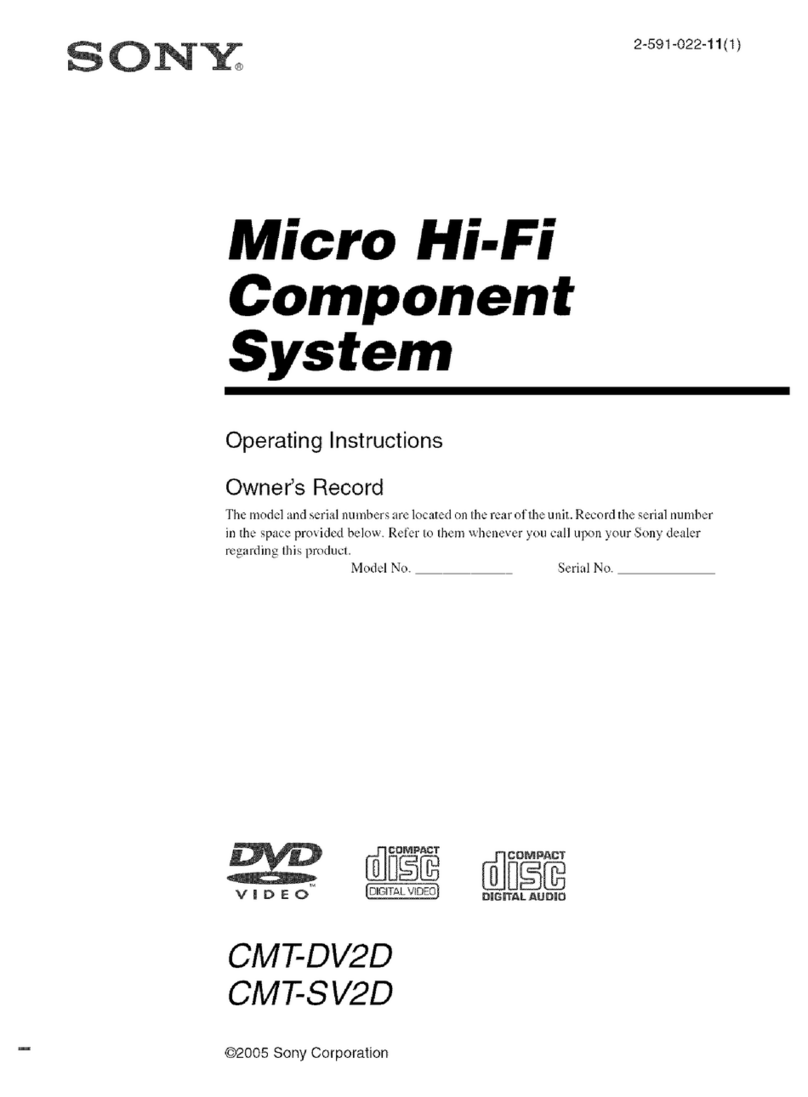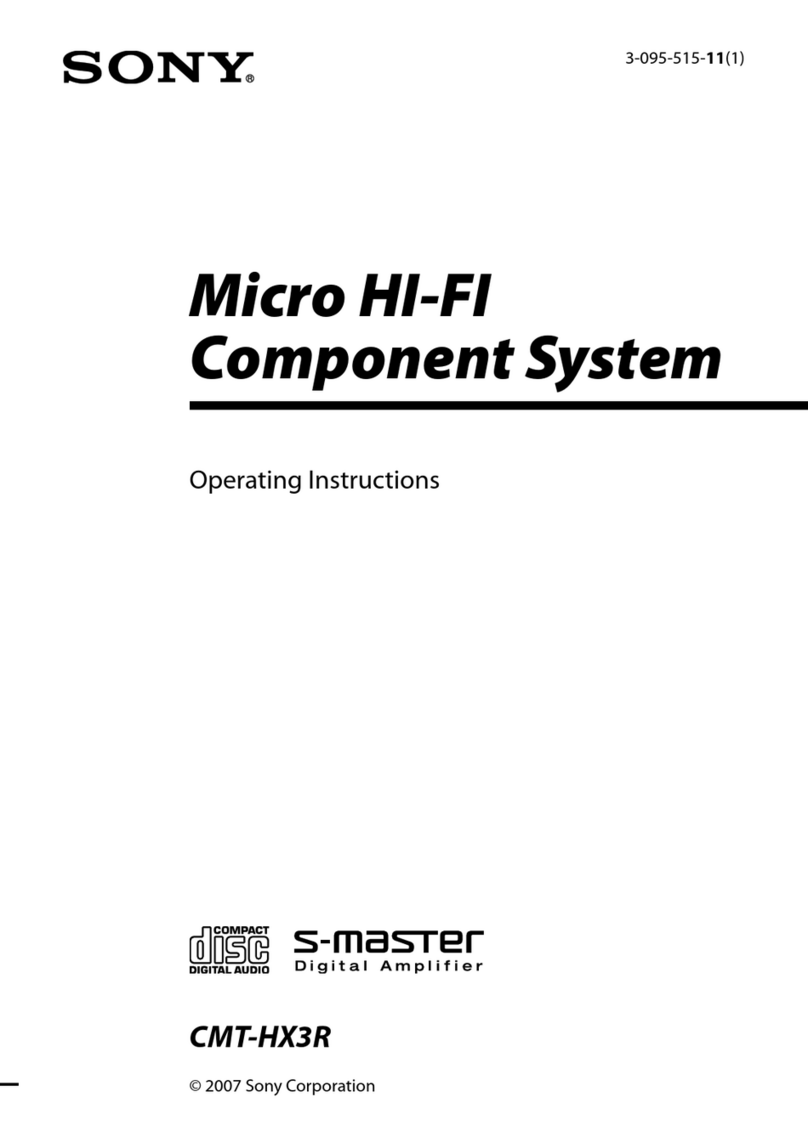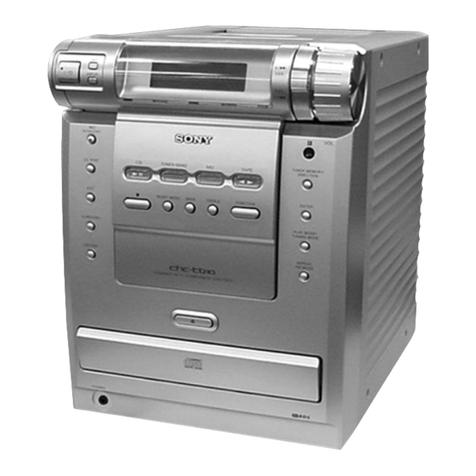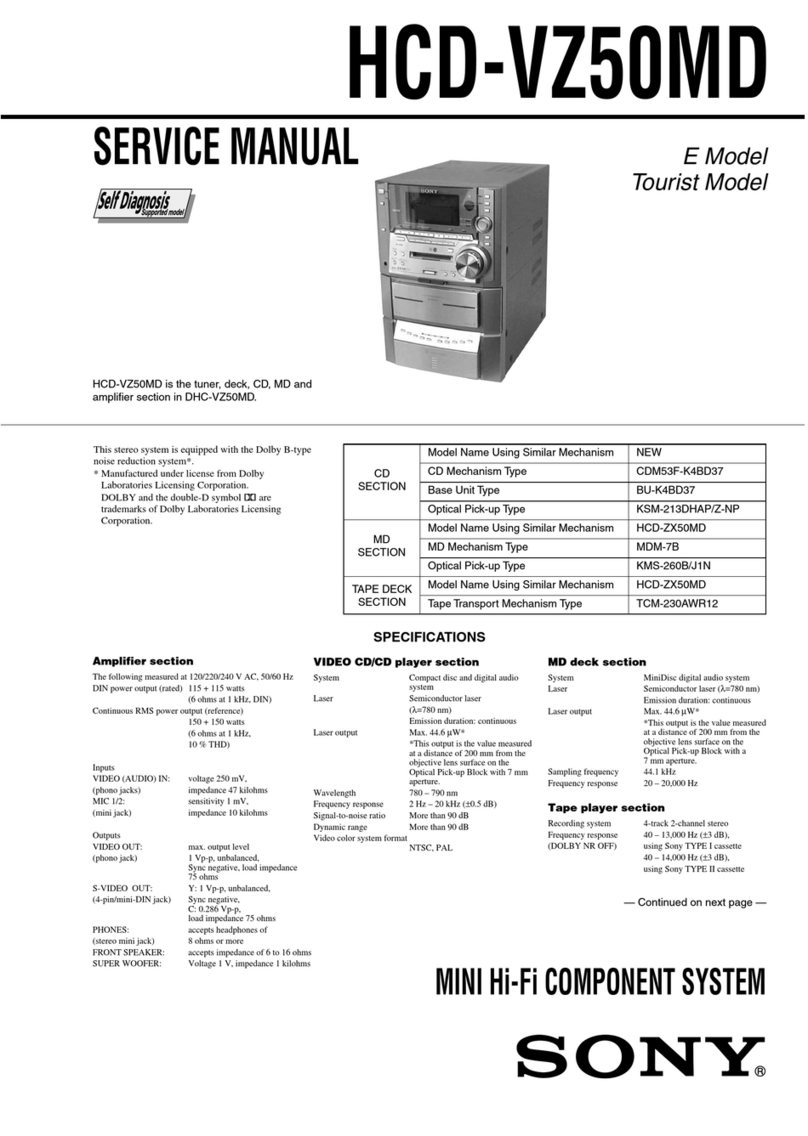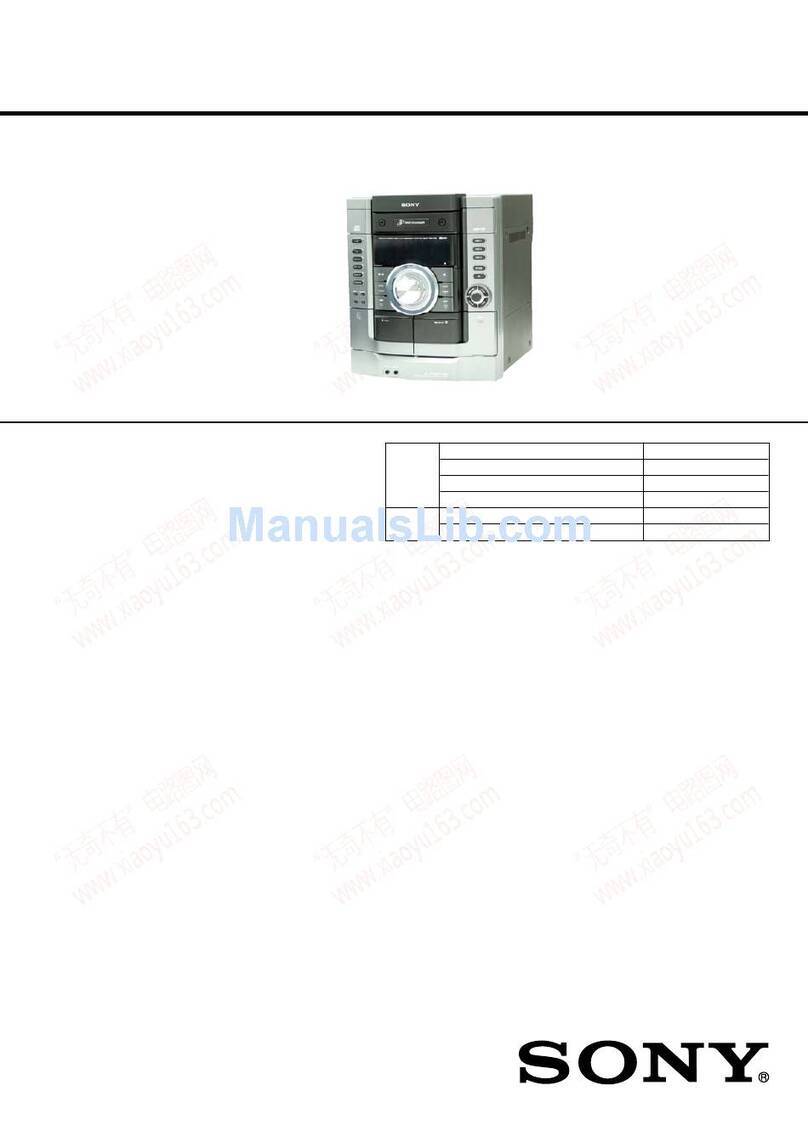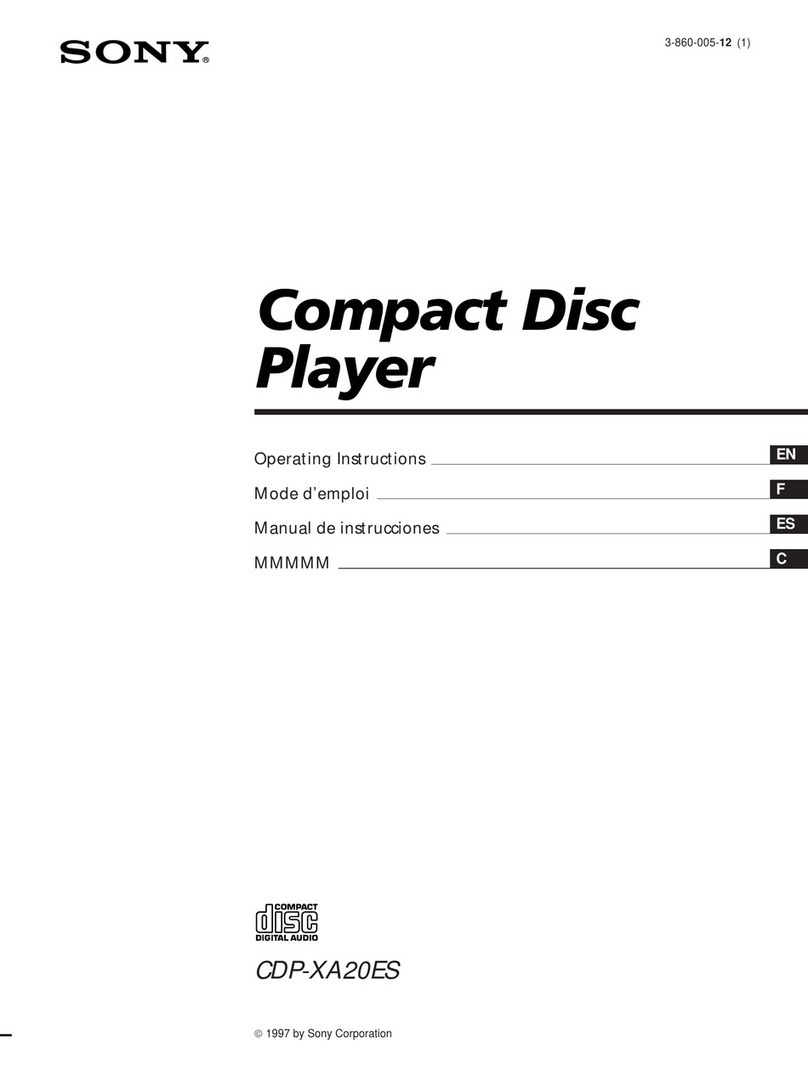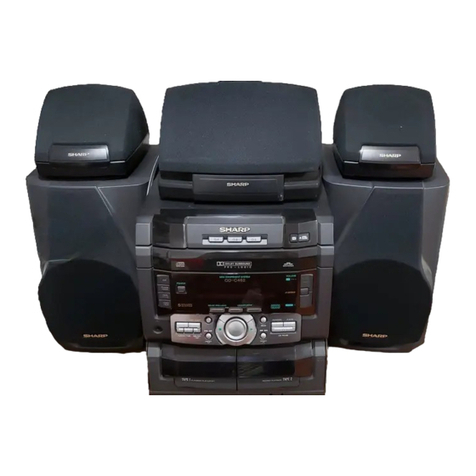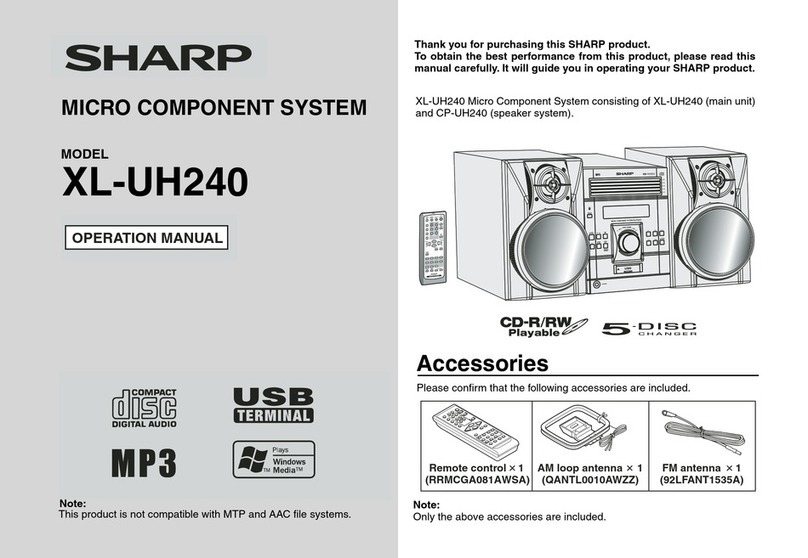3
HCD-XG100AV/XG900AV
TABLE OF CONTENTS
1. SERVICING NOTES ................................................ 4
2. GENERAL
Location of Controls ....................................................... 5
Setting the Time .............................................................. 6
3. DISASSEMBLY
3-1. Disassembly Flow ........................................................... 7
3-2. Case ................................................................................. 7
3-3. Front Panel Section ......................................................... 8
3-4. Cover (TC), Tape Mechanism Deck
(TCM-230PWR42) ......................................................... 8
3-5. MAIN Board, “Fan, D.C. (M901) (XG100AV)” ........... 9
3-6. MAIN Board (XG900AV) .............................................. 9
3-7. CD Mechanism Deck (CDM37M-5BD32L).................. 10
3-8. Base Unit (BU-5BD32L) ................................................ 11
3-9. Disc Table........................................................................ 11
4. TEST MODE.............................................................. 12
5. MECHANICAL ADJUSTMENTS....................... 14
6. ELECTRICAL ADJUSTMENTS
Deck section .................................................................... 14
CD Section ...................................................................... 17
7. DIAGRAMS
7-1. Block Diagram – CD SERVO Section – ....................... 18
7-2. Block Diagram – TUNER/TAPE DECK Section – ...... 19
7-3. Block Diagram – MAIN Section (1/2) – ....................... 20
7-4. Block Diagram – MAIN Section (2/2) – ....................... 21
7-5. Block Diagram – DISPLAY/KEY CONTROL/
POWER SUPPLY Section – ........................................... 22
7-6. Note for Printed Wiring Boards and
Schematic Diagrams ....................................................... 23
7-7. Printed Wiring Board – BD Board – ............................. 24
7-8. Schematic Diagram – BD Board – ................................ 25
7-9. Printed Wiring Boards – CD MOTOR Section – .......... 26
7-10. Schematic Diagram – CD MOTOR Section – .............. 27
7-11. Printed Wiring Board – AUDIO Board – ...................... 28
7-12. Schematic Diagram – AUDIO Board – ......................... 29
7-13. Printed Wiring Board – LEAF SW Board – .................. 30
7-14. Schematic Diagram – LEAF SW Board –..................... 30
7-15. Schematic Diagram – MAIN Board (1/3) – .................. 31
7-16. Schematic Diagram – MAIN Board (2/3) – .................. 32
7-17. Schematic Diagram – MAIN Board (3/3) – .................. 33
7-18. Printed Wiring Board – MAIN Board – ........................ 34
7-19. Printed Wiring Board – PA Board – .............................. 36
7-20. Schematic Diagram – PA Board – ................................. 37
7-21. Printed Wiring Board – SURROUND Board –............. 38
7-22. Schematic Diagram – SURROUND Board –................ 39
7-23. Printed Wiring Boards – MIC/FRONT INPUT/
HEADPHONES Boards –............................................... 40
7-24. Schematic Diagram – MIC/FRONT INPUT/
HEADPHONES Boards – ............................................. 41
7-25. Printed Wiring Board – PANEL FL Board –................. 42
7-26. Schematic Diagram – PANEL FL Board – ................... 43
7-27. Printed Wiring Boards
– PANEL VR/ILLUMINATION Boards – ..................... 44
7-28. Schematic Diagram
– PANEL VR/ILLUMINATION Boards – ..................... 45
7-29. Printed Wiring Boards – TC-A/TC-B/CD-L/
CD-R (1)/CD-R (2) Boards – ......................................... 46
7-30. Schematic Diagram – TC-A/TC-B/CD-L/
CD-R (1)/CD-R (2) Boards – ......................................... 47
7-31. Printed Wiring Board – TRANSFORMER Section–.... 48
7-32. Schematic Diagram – TRANSFORMER Section–....... 48
7-33. IC Pin Function Description ........................................... 54
8. EXPLODED VIEWS
8-1. Case, Back Panel Section................................................ 59
8-2. Front Panel Section-1...................................................... 60
8-3. Front Panel Section-2...................................................... 61
8-4. Chassis Section ............................................................... 62
8-5. CD Mechanism Deck Section (CDM37M-5BD32L) .... 63
8-6. Base Unit Section (BU-5BD32L)................................... 64
8-7. Tape Mechanism Deck Section-1
(TCM-230PWR42) ......................................................... 65
8-8. Tape Mechanism Deck Section-2
(TCM230PWR42)........................................................... 66
9. ELECTRICAL PARTS LIST ............................... 67
